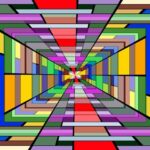
Image by Wolfgang Borchers from Pixabay
By Courtney Rosenfeld
In an increasingly competitive marketplace, small business owners are always on the hunt for inventive strategies to set their enterprises apart. One solution that is steadily gaining traction is the use of 3D design software. Far from being just another tech gimmick, this software revolutionizes marketing endeavors, allowing businesses to express creativity, improve collaboration, and bring unique products to market faster. In this article from Succeeding in Small Business, we’ll explore how 3D design software acts as a catalyst for achieving these objectives.
Creating authentic visual representations
The first major advantage that 3D design software offers is the ability to create stunningly realistic and detailed representations of products. Unlike flat, 2D images, 3D modeling lends a tangible quality to your offerings, capturing attention and fostering a deeper emotional connection with consumers. For example, a furniture retailer could create meticulous 3D models of its products, allowing customers to virtually place them in their own homes before making a purchase. Another instance would be a clothing store presenting its designs in 3D, thereby giving customers a more comprehensive understanding of fabric texture and fit. Technology such as Augmented Reality (AR) enhances this experience by allowing these 3D models to be superimposed onto real-world environments.
Elevating marketing campaigns
Utilizing 3D design software grants businesses unparalleled creative liberty to elevate their marketing strategies. Employing stager tools as part of the software suite, companies can generate intricate 3D visuals that breathe life into promotional endeavors, such as digital advertising and social media campaigns. For example, a kitchenware business could employ these stager tools to produce detailed 3D renderings, allowing customers to envision products in different home settings. Simultaneously, a tech-focused venture might use 3D modeling to offer an inside look at their device’s functionality, with Virtual Reality technologies enhancing these visuals to create an immersive consumer experience.
Fostering collaborative workflows
Collaboration becomes much more efficient with 3D design software. Small teams can effortlessly share their 3D models, offer feedback, and make rapid changes. This paves the way for collaborative brainstorming, culminating in better end products. Project management tools with real-time updating features can seamlessly integrate with 3D software, making the design process more fluid and interconnected.
Efficiency and error reduction
One of the intrinsic advantages of 3D design software is how it streamlines workflow and minimizes errors. By visualizing a product in three dimensions, businesses can spot design flaws early in the process, thereby preventing costly mistakes down the line. Companies can also integrate 3D software with other tech tools like artificial intelligence to predict how a product will perform under different conditions, thus reducing the risks associated with product development.
Personalization and customization
3D design software allows businesses to easily customize products according to individual consumer preferences. For example, a jewelry store might offer a platform where customers can design their own custom pieces, visualizing them in 3D before making a purchase. Or, an automobile retailer could let buyers customize vehicle features in a 3D environment. Technologies such as 3D printing can bring these personalized products to life, fostering a connection between the brand and its customers.
Speed to market advantage
Lastly, 3D design software significantly accelerates the time it takes for a product to go from concept to market. The quick iterations possible with 3D modeling and printing allow businesses to refine their designs swiftly, enabling faster launches and greater responsiveness to market demands. Combined with rapid prototyping technologies, small businesses can outpace competitors and seize market opportunities.
3D design software is far more than a mere technological tool; it is a transformative asset for small businesses. The multifaceted benefits of this software enable businesses to captivate audiences with authentic visuals, streamline internal processes, and bring personalized, high-quality products to market quickly. Embrace the limitless possibilities that 3D design software offers to give your small business a competitive edge in today’s ever-evolving marketplace.
___________
Courtney Rosenfeld started Gig Spark to be a resource and the first step for people who are looking to join the gig economy, either to supplement their income or as a way to fulfill their dreams of becoming an entrepreneur.
